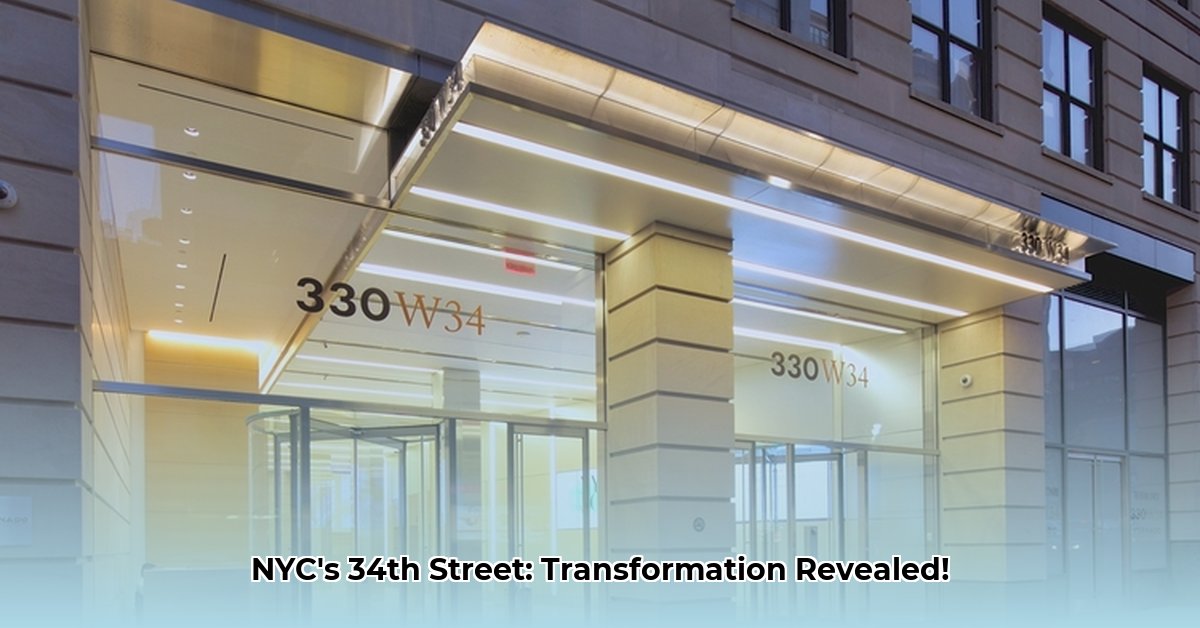
330 West 34th Street: A Case Study in Urban Redevelopment
330 West 34th Street, a recently redeveloped office building in New York City, presents a compelling case study in urban revitalization and real estate investment. Located near the revitalized Moynihan Train Hall and the burgeoning West Side, its strategic location offers significant advantages. However, a comprehensive assessment requires a nuanced examination of its redevelopment strategy, market positioning, and the financial implications for various stakeholders. This analysis will explore the building's strengths and weaknesses, discuss the challenges of obtaining comprehensive data for a full financial evaluation, and assess its long-term prospects within the competitive Manhattan office market. For a similar case study of NYC redevelopment, see this analysis of 150 Varick Street.
Location, Amenities, and Sustainability: A Trifecta of Appeal?
The building's proximity to Moynihan Train Hall is a major asset, enhancing its attractiveness to potential tenants. The recent redevelopment has resulted in significant upgrades, including a modernized lobby, updated storefront, and enhanced amenity spaces designed to attract a contemporary workforce. Further bolstering its appeal is its LEED certification, reflecting a commitment to sustainability. However, variations in reported square footage (ranging from significantly smaller figures to approximately 682,000 square feet) hinder a precise valuation. This lack of clarity necessitates a more cautious assessment of its total market value and the potential return on investment for stakeholders. How this discrepancy affects investment decisions requires careful consideration.
Tenant Profile and Market Analysis: Unveiling the Occupancy Puzzle
The tenant profile plays a significant role in evaluating 330 West 34th Street's success. While prominent names like Foot Locker and HomeAdvisor have leased space, the absence of publicly available data concerning lease terms, occupancy rates, and average rent prevents a comprehensive financial analysis. This data void makes it challenging to fully assess the building's financial performance and long-term stability. Further, a detailed analysis of the tenant mix is needed to determine its alignment with current market trends. What are the typical lease lengths? What industries are represented? Are these tenants reflective of the current demand in the area? These factors are crucial in understanding the building's financial health.
A comparative market analysis is equally crucial. While the building's flexible floorplans (ranging from 27,000 to 53,000 square feet) offer potential advantages in attracting a wider range of tenants, determining its competitive positioning relative to comparable properties requires access to detailed rental rate and occupancy data of similar buildings in the immediate vicinity. Without this, a robust comparison is not feasible.
Stakeholder Perspectives: Balancing Developer, Tenant, and Investor Needs
Vornado Realty Trust, the developer, faces the ongoing challenge of maintaining optimal occupancy and employing effective leasing strategies to maximize rental income amidst market fluctuations. Potential tenants need to carefully weigh the building's attributes – location, amenities, and lease terms – against comparable properties to ensure a suitable fit for their long-term business needs. Investors face the challenge of evaluating the building's true value and potential returns in the absence of complete financial data, making risk assessment complex. Consequently, a comprehensive understanding of the building's performance necessitates a holistic perspective that takes into account all stakeholder concerns.
Risk Assessment and Mitigation Strategies
Several risk factors could impact 330 West 34th Street's long-term success. These include high vacancy rates, economic downturns, unexpected repair costs, and competition from newer buildings. Mitigation strategies should include active tenant recruitment, flexible lease terms, competitive pricing, diversification of tenant mix, securing long-term leases, maintaining financial reserves, implementing regular maintenance, and comprehensive insurance coverage. This proactive risk management is essential to securing the building’s long-term financial health.
Key Takeaways:
- 330 West 34th Street benefits from a prime location near Moynihan Train Hall.
- The redevelopment has created a modern, attractive Class A office space.
- Limited publicly available data currently restricts a complete financial analysis.
- Attracting and retaining the right mix of tenants is crucial for long-term stability.
- Market fluctuations and the broader economic climate pose significant risks.
Further research into lease agreements, thorough tenant profiling, and a resolution of the discrepancies in reported square footage are critical steps in providing a more complete and reliable assessment of 330 West 34th Street's redevelopment success. Only with this detailed information can a truly accurate evaluation of its market position, value, and potential for future growth be made.